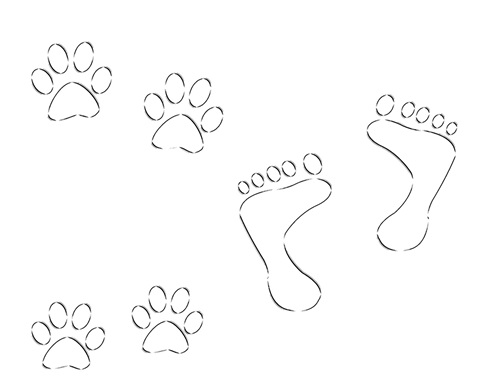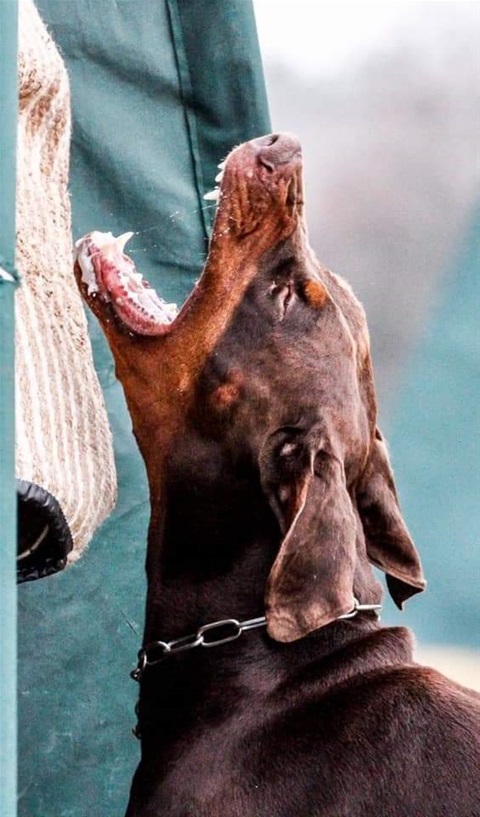Stages of development in the Dog.
Any encounter, good or bad, that your canine puppy or adult experiences will influence its mental growth and will dictate how it will respond to that stimulus in the future. The canine puppy should be socialised correctly, especially while going through critical stages of development. This, in due course will help with the way in which your Dog deals with life's experiences.
The puppies’ breeder should deal with the first few weeks of their life but by the time the pup is ready to leave the nest, at approximately 7-8 weeks of age, you, as the new caretaker should know the following:
Between the ages of 3-7 weeks the first phase of imprinting (canine and human awareness) or socialisation will start, with the brain developing rapidly now, sound, and visual socialisation is a must, if disturbances (fear) to unfamiliar stimuli are to be kept to a minimum. Communication through body language starts at around four weeks of age along with the first tail wags and puppies will start to claim rank or position within their pack of siblings. They will do this through playing and play fighting and their position within their siblings may change from day to day.
Socialisation falls into three phases. After the imprinting phase mentioned in the previous paragraph comes the true socialisation period. At around 8-12 weeks the puppy will start to recognise people and other canines as fellow-members of its pack and with whom it will form relationships/bonds. If a dog does not have sufficient contact with people between the 3rd and 11th weeks of his life, timidity and fearfulness may be the result and the pup will find it more difficult to develop a bond with humans.
The more contact a dog has in this period with people, with other dogs, other animals and with objects, in short, the more he is involved, the more inclined it will be in later life towards well-balanced behaviors. Smell, touch, skin contact and above all, play, are all of vital importance to a positive mindset and sociable puppy.
The dog must be handled regularly and have the opportunity to become thoroughly familiar with the scent of humans, male, female, old and young. It is also important that the pup has adequate contact with its own kind when applicable to be able to build and maintain communication skills with its own species in the future. This does not mean constant play with strange dogs/pups. This only gives your puppy the idea that all dogs are there to be played with and this is what can cause you problems in the future. Teach your puppy how to be calm around strange dogs which means choosing good role models for them to learn from.
Between now and around 4-5 months is when the young pup will discover who in this pack is in charge. So, any boundaries and rules that have been established will be tested for consistency and this is a time when you will need to “step up” and support the important structure that has been set in place by you to maintain balance. Calm corrections, guidance, consistency and structure are needed at this time.
By the time your pup is about 6 months old socialisation should have been maintained and reinforced because whatever is learnt by this stage will dictate how the dog adjusts into adulthood and throughout its life and I hope we all want a calm and confident puppy. Throughout this period the young pup should be introduced to as many unfamiliar places as possible as this will help to eliminate undesirable fearful behaviour later when it is in place or surroundings that are new to it. Remember it is also about educating said pup on what is expected from it when it is experiencing different places so that good behaviour can be guaranteed in the future.
Lack of sufficient exposure to strange or unfamiliar noises can also lead to the Dog becoming hypersensitive upon hearing something it does not recognise. Much of these stimuli can be administered by a knowledgeable breeder but must be continued by you, as the guardian and educator, through sensible acclimatisation. A good example of sound preparation is playing a recording of fireworks at various levels to desensitise your puppy when November 5th arrives.
A puppy that acts fearfully should not be comforted but given support by you as the protector, as the puppy will often see your efforts as a sign of affirmation of that fear. Lead by example and remain calm, wait for the puppy to recover, and then praise and move on. A pack leader would ignore or correct the unwanted behaviour and only give positive attention when the behaviour displayed is desirable. This will encourage a confident, balanced state of mind.
Both male and female dogs go through a period of adolescence between approximately 9 to 36 months, depending on the breed:
A female will have her first season (reproductive cycle) normally between 6 months and 1 year, and this will last for approximately 21 days. Her disposition can be affected by this hormonal change in different ways. It is important to remember that all these variants in her behaviour should be treated with a calm assertive energy and, where appropriate, she will need to be corrected for any inappropriate behaviour. (It should be taken on board that these variants in her behaviour, however, are not a true sign of her temperament). Should you decide not to breed from your female Dog however, she should be spayed about three months after her first season finishes as, at this time, her hormones will likely be back in balance.
During this period of adolescence, the male's testosterone levels will also begin to rise, and he will start to lift his leg when urinating. He will start to mark territory when on a walk. He will try to assert himself more with other dogs and humans both those within and outside of your pack. Other signs of adolescence are the testing of boundaries such as not coming when called and a general disobedience. All of these should be handled by correction or consequence, and it is important to realize that the youngster is not doing these things with negative intentions. They are not rationalising the situation and trying to “tick you off”. These behaviours are perfectly natural and are a normal part of your dog's development. What is important here is how you as their leader deal with them and your consistency with doing so.
Laying a strong foundation for a puppy starts with their breeder but as their future guardians and educators it is up to you to continue this from the day they arrive in your home. Build a bond of trust and respect, communicate clearly and fluently in a way that they understand. If you don’t know how or you are struggling, ask for help sooner rather than later and please remember that your dog speaks a very different language and has completely different values.
by DogMa

